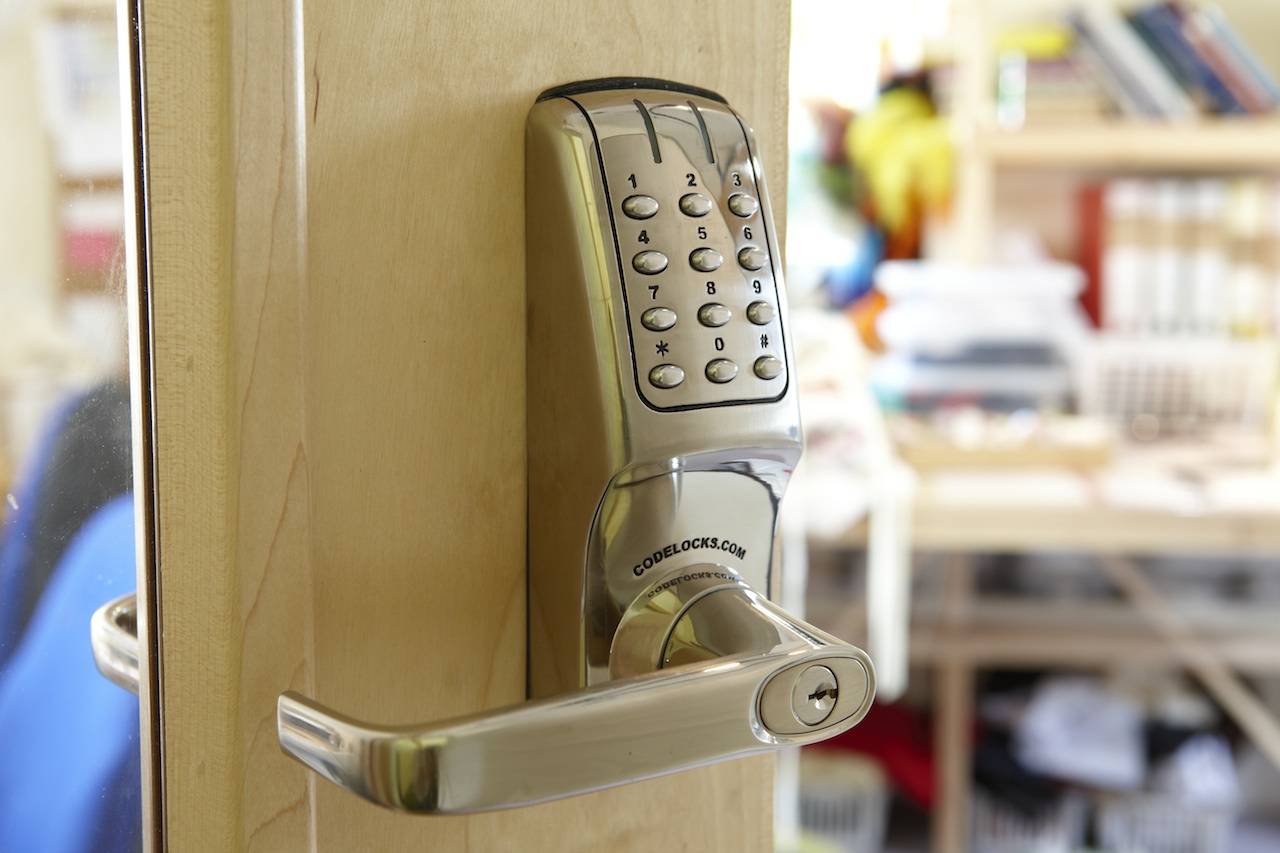For years people have been able to use simple, single-coded mechanical locks to control access without the hassle of using keys. If facilities or estate managers needed more sophisticated features, they traditionally turned to card-based access control systems. However, thanks to advances in technology, battery-operated digital locks are becoming increasingly capable, allowing them to be used as an alternative to the more expensive networked systems.
In this blog post, we take a look at some of the developments in progress and assess what impact they will have on the digital lock market.

Technology is significantly influencing the way in which access codes are programmed. For example, to change the access code on most mechanical locks, you have to remove the lock from the door. With an electronic lock you don't have to; the codes can be programmed via the keypad. It's now even possible to specify electronic digital locks to be programmed via a USB stick or similar device.
This allows the owner of single or multiple locks to download specific programs and access codes from software on a computer to the USB stick and upload them to the lock. If an estates or security manager is responsible for updating and controlling the access codes for tens or even hundreds of digital locks; like in a hospital for example, then this feature can save a significant amount of man hours and also make it much more likely the codes are changed on a regular basis.
All the access codes and programs can be viewed on the computer they were created, giving the manager clear visibility of how, where and when access permissions were set up and used.
In industries where the protection of controlled assets or sensitive data is high on the agenda, a keyless digital lock with the ability to record audit trails can be a useful analytical tool.
Taking hospitals again as an example, where medicines need to be carefully monitored and controlled. Access to the room or cabinet where the drugs are stored is likely to be restricted to a handful of medical staff, each one with an individual access code for the digital lock. In the event that some of the medicine is unaccounted for, data from the lock can be downloaded using a USB stick and then reviewed. The digital lock records each access code used, allowing you to see who has entered the room or cabinet and when.
The digital lock will also register any incorrect code attempts. If a high number show up on the data from the audit trail, then it could be that the lock has been tampered with. As the lock has an ID number, vulnerable areas can be easily identified.
Another innovation improving the convenience and control for digital locks is the ability to generate access codes remotely.
A secure web-based application allows a unique time-sensitive access code to be generated, usually from a remote location for an individual or group of electronic locks. This works by setting up the locks prior to dispatch with a unique matching algorithm to the web-based software, which allows the software to predict the code on the installed lock at any given time.
This feature enables you to grant temporary access by remotely issuing a code to a digital lock to perform a particular service. A typical scenario is a data centre full of racks of servers, each one secured with a digital cabinet lock. Access to these servers is often required for routine or one-off maintenance purposes. The owner of the servers can send a maintenance engineer to the location and, using the application, generate a code for the engineer to access the cabinet. The code can be sent via a text message or email to the engineer's mobile on the day the access is required; it will not work outside the designated time-slot.
It's clear to see that technology is having a positive impact on the performance and capability of electronic push-button locks, and there's no doubt that these advances will further extend the scope of the products and their ability to serve new markets. Looking into the future, we'll continue to see new ways of controlling coded locks - such as using smartphone or tablet applications, again adding to their usability and helping the products secure an even bigger share of the access control market.
If you'd like to find out what our digital locks are capable of please, visit our website or contact us.
23, Jul 2013